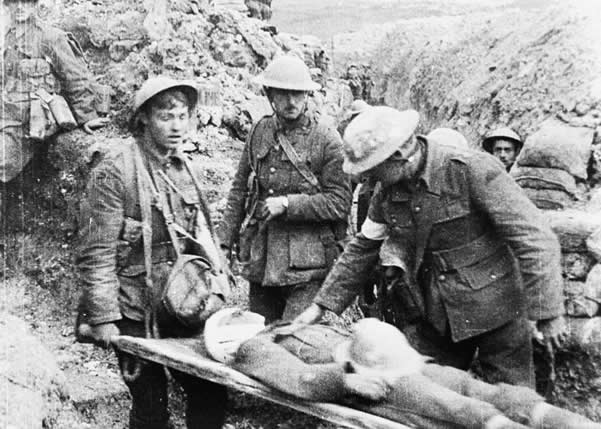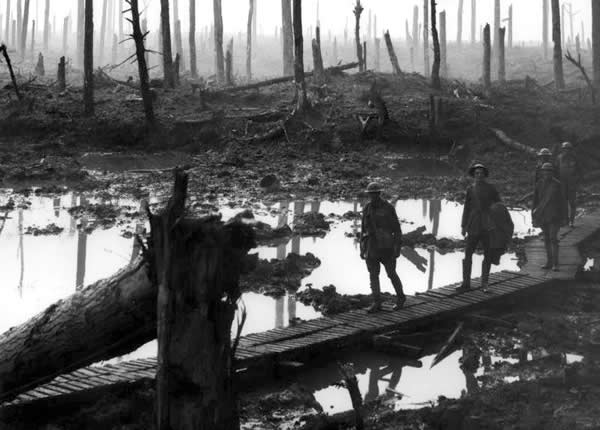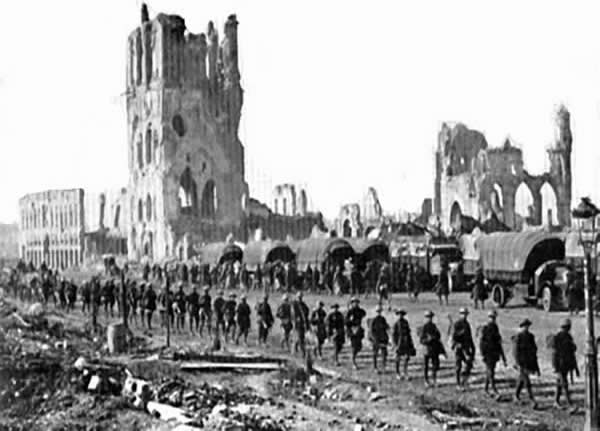The peace conference that led to the Treaty of Versailles began its deliberations in Paris in January 1919. The proceedings were dominated by the French Premier Georges Clemenceau and the British Prime Minister David Lloyd George - both of them pushed by vengeful electorates to make somewhat harsher demands of their adversaries than they might otherwise have made.
The Italian Minister President Vittorio Orlando and the American President Woodrow Wilson were also members of the Council of Four, where the most important issues were discussed.
The German government was informed of the Allied peace terms on 7 May, shortly after the counter-revolutionary bloodbath in Munich that put an end to a Quixotic socialist experiment. The proposals exceeded the worst fears of the direst of pessimists. That Germany should lose Upper Silesia, a large chunk of West Prussia, Danzig, Memel, and that East Prussia should be separated from the rest of Germany came as a devastating blow.
Things were hardly better in the west. The Saar, on the borders of France, was to be placed under the League of Nations for 15 years, the left bank of the Rhine permanently demilitarised, the entire Rhineland occupied for up to 15 years. Eupen-Malmedy was to be handed over to Belgium. An Anschluß with Austria was expressly forbidden. Germany's colonial empire was to be dissolved, as the Weimar Republic took shape.
The army was not to exceed 100,000 men. Military aircraft, submarines, and tanks were among a number of outlawed weapons. The fleet was to surrender, but it was scuttled before it reached the naval base at Scapa Flow. Ninety per cent of the merchant navy had to be handed over, along with 10 per cent of the cattle and a substantial proportion of the rolling stock of the state railway.
The victors were unable to agree on a final sum for reparations, but 40 million tons of coal were demanded annually. Germans were particularly incensed by article 231, which demanded of them to make good the damage caused by a war which they and their allies had begun.
A deliberate mistranslation of this article (ie 231), making it refer to Germany's 'sole guilt' (Alleinschuld) (as opposed to the joint guilt of Germany and her allies, which was the wording in the original text) further inflamed a consternated public and set off an ever increasing wave of righteous indignation about the 'war guilt lie'.
Source BBCCommonwealth War Graves
Lest We Forget
From 1914 to1918 97 men and one woman went to War - 20 men never came home. Read the life history of each man and learn where they died
Those Who Gave Their LivesLemsford local History Group WW1 Records
Memories & Letters
Memories from the people of Lemsford Parish – letters from the Front and home and much, much more
Local Parish Magazine
From the Bishop's Hatfield Parish Magazine 1914 to 1918, Church- Social - War Records
Servicemen of Lemsford
War records from 98 men who went to war. We show their memories images and why we should never forget them.
5 Facts the Great War
Battles of WW1

Battle of the Somme
1 July - 13 November 1916The British suffered around 420,000 casualties, the French 195,000 and the Germans around 650,000. Only in the sense of relieving the French at Verdun can the British have claimed any measure of success.

Battle of Passchendaele
31 July - 6 November 1917Passchendaele village lay barely five miles beyond the starting point of his offensive. Having prophesied a decisive success, it had taken over three months, 325,000 Allied and 260,000 German casualties

The First Battle of Ypres, 1914
October 19 to November 22, 1914First Battle of Ypres saw the BEF sustain 7,960 killed, 29,562 wounded, and 17,873 missing, while the French incurred between 50,000 and 85,000 casualties of all types. To the north, the Belgians took 21,562 casualties
